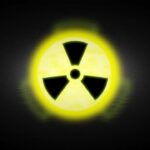As the world grapples with the twin crises of climate change and environmental degradation, sustainability is no longer a buzzword—it is a professional responsibility. For engineers, particularly in fields like chemical, mechanical, and environmental engineering, understanding and implementing sustainable practices has become essential. Whether designing a product, developing a new process, or optimizing supply chains, engineers must evaluate environmental impacts holistically.
Three key concepts help engineers assess and reduce the environmental burden of their activities: Life Cycle Assessment (LCA), Carbon Footprint, and the E-Factor. These terms are foundational to green engineering and sustainable product design. This article dives into what these terms mean, how they are used, and why every engineer should understand them.
🌍 1. Life Cycle Assessment (LCA)
What is LCA?
Life Cycle Assessment (LCA) is a systematic method for evaluating the environmental impacts of a product, process, or service throughout its entire life cycle—from raw material extraction to end-of-life disposal. This is often summarized as “cradle-to-grave” analysis.
The ISO 14040/14044 standards define LCA methodology and guide practitioners in conducting assessments.
Stages of a Typical LCA
Goal and Scope Definition
What is the purpose of the study?
What boundaries are considered (e.g., cradle-to-gate, gate-to-gate)?
Life Cycle Inventory (LCI)
Collection of data on material and energy inputs and environmental releases (e.g., emissions, waste).
Life Cycle Impact Assessment (LCIA)
Translating inventory data into environmental impact categories (e.g., global warming, eutrophication, acidification).
Interpretation
Drawing conclusions, identifying trade-offs, and recommending improvements.
Applications of LCA
Product Design: Identify hotspots in environmental impact and improve design choices.
Process Optimization: Reduce waste and emissions by modifying steps with the greatest environmental load.
Sustainability Reporting: Provide data for corporate environmental disclosures.
Policy Development: Support regulations based on life-cycle environmental performance.
Example
A company comparing paper vs. plastic bags might find that:
Paper uses more water and energy to produce.
Plastic has longer environmental persistence.
Transportation emissions vary by weight.
LCA helps identify which choice is better in a specific context, not just based on public perception.
🌱 2. Carbon Footprint
What is Carbon Footprint?
The carbon footprint measures the total amount of greenhouse gas (GHG) emissions caused—directly or indirectly—by an individual, organization, event, or product. It is usually expressed in units of carbon dioxide equivalent (CO₂e) to account for the global warming potential (GWP) of various gases.
Carbon footprint is a subset of LCA, focusing solely on climate change impacts rather than broader environmental effects.
Sources of Emissions
Carbon footprint assessments typically include:
Scope 1: Direct emissions from owned or controlled sources (e.g., fuel combustion).
Scope 2: Indirect emissions from purchased electricity or heat.
Scope 3: Other indirect emissions (e.g., supply chain, product use, travel).
Why It Matters
Carbon footprint is often the most visible sustainability metric. Governments, corporations, and even consumers are using it to:
Set carbon reduction targets (e.g., net zero by 2050).
Select sustainable products.
Comply with regulatory frameworks and carbon pricing systems.
Report progress through ESG (Environmental, Social, Governance) disclosures.
Calculating Carbon Footprint
Tools like the Greenhouse Gas Protocol, ISO 14067, and various LCA software platforms (e.g., SimaPro, GaBi, OpenLCA) help engineers quantify carbon footprints at different system boundaries.
Example
For a liter of bottled water, the carbon footprint could include:
Emissions from plastic bottle production
Energy for bottling and labeling
Transport emissions
Refrigeration or use-phase emissions
Even something as simple as changing the bottle design can have a significant effect on carbon emissions.
♻️ 3. E-Factor: Environmental Impact of Chemical Processes
What is E-Factor?
Introduced by Roger Sheldon, the E-Factor (Environmental Factor) is a metric used to measure the amount of waste generated per kilogram of product in a chemical process. It is defined as:
E-Factor=kg of wastekg of product\text{E-Factor} = \frac{\text{kg of waste}}{\text{kg of product}}E-Factor=kg of productkg of waste
Unlike LCA or carbon footprint, the E-Factor is particularly useful in chemical process engineering and green chemistry.
Why It Matters
Chemical manufacturing often produces significant waste—including solvents, byproducts, and unreacted reagents. High E-factors indicate inefficient processes with potential environmental and economic costs.
E-Factor Ranges by Industry
| Industry Sector | Typical E-Factor |
|---|---|
| Bulk Chemicals | 1–5 |
| Fine Chemicals | 5–50 |
| Pharmaceuticals | 25–100+ |
Pharmaceuticals often have high E-factors due to complex multi-step syntheses, use of protecting groups, and low atom economy.
Reducing the E-Factor
Catalysis: Replace stoichiometric reagents with catalytic ones.
Process Intensification: Combine steps or use continuous processes.
Solvent Recovery: Recycle or replace hazardous solvents.
Alternative Pathways: Use biocatalysis or greener reagents.
Limitations
E-Factor treats all waste equally (e.g., benign water vs. toxic solvent).
Doesn’t capture energy use or lifecycle emissions.
To address this, the Environmental Quotient (EQ) was introduced:
EQ=E-Factor×Environmental Impact Factor\text{EQ} = \text{E-Factor} \times \text{Environmental Impact Factor}EQ=E-Factor×Environmental Impact Factor
This weights waste by its environmental harm, offering a more nuanced measure.
🛠️ Why These Metrics Matter to Engineers
Engineers are no longer tasked only with building efficient and cost-effective systems. Today, the expectations include:
Reducing resource consumption
Minimizing pollution
Designing for circularity and end-of-life
Meeting sustainability standards and regulations
These three tools—LCA, carbon footprint, and the E-Factor—help engineers:
Quantify impact: Translate vague “green goals” into measurable performance.
Make decisions: Choose better materials, technologies, and process paths.
Communicate: Provide credible data to stakeholders, regulators, and the public.
Drive innovation: Push for cleaner, smarter design at every stage of a product or process lifecycle.
🔍 How They Relate and Differ
| Metric | Focus Area | Scope | Use Case |
|---|---|---|---|
| LCA | All environmental impacts | Full lifecycle | Comprehensive environmental analysis |
| Carbon Footprint | Greenhouse gas emissions only | Product/Org-wide | Climate-focused reporting and design |
| E-Factor | Process waste (kg/kg) | Manufacturing | Process efficiency and green chemistry |
While LCA provides a holistic picture, the carbon footprint zooms in on climate change, and the E-Factor focuses on manufacturing waste. Used together, they offer a multi-dimensional view of sustainability performance.
🔚 Conclusion
Understanding and applying green metrics like Life Cycle Assessment (LCA), Carbon Footprint, and the E-Factor is not optional for engineers anymore—it’s essential. These tools bridge the gap between engineering design and environmental responsibility. They enable informed decisions, better communication, and real impact in reducing humanity’s ecological footprint.
In a world where sustainability drives policy, funding, and public trust, engineers who speak the language of environmental metrics are not just more responsible—they’re more relevant.




